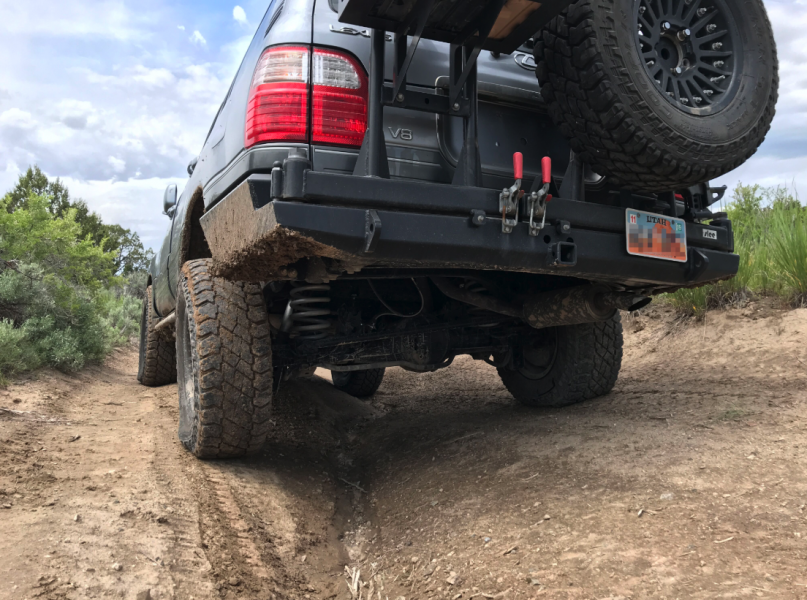
When driving off-road, airing down tires is helpful for both traction and comfort.
I’ve been using this ARB tire deflator for years, and it’s still working like champ. Built with brass and other quality materials, it’s constructed well and comes with a durable pouch.
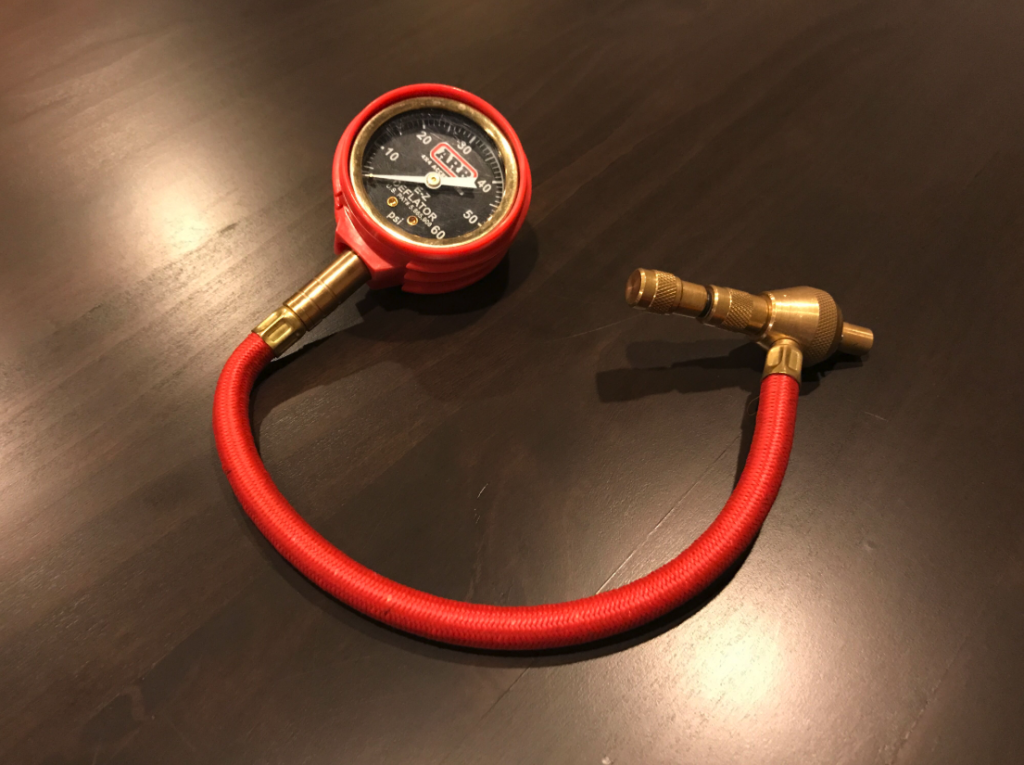
The simple device threads onto a tire valve, and engages the valve core. You turn the knob counter-clockwise to remove the valve core, and it stays inside the fitting. With the valve core removed, you can pull back on the brass valve to release air from the tire. If you want to check your pressure, push the valve back in to stop the air flow, and read the pressure. Repeat until you’ve hit your desired air pressure.
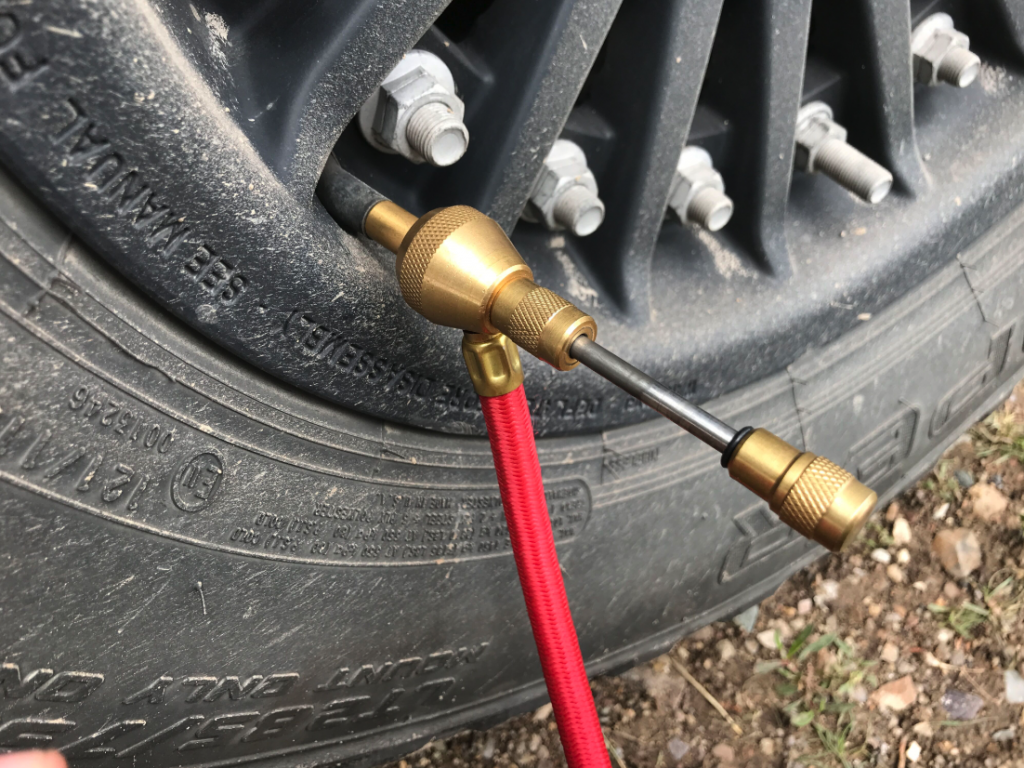
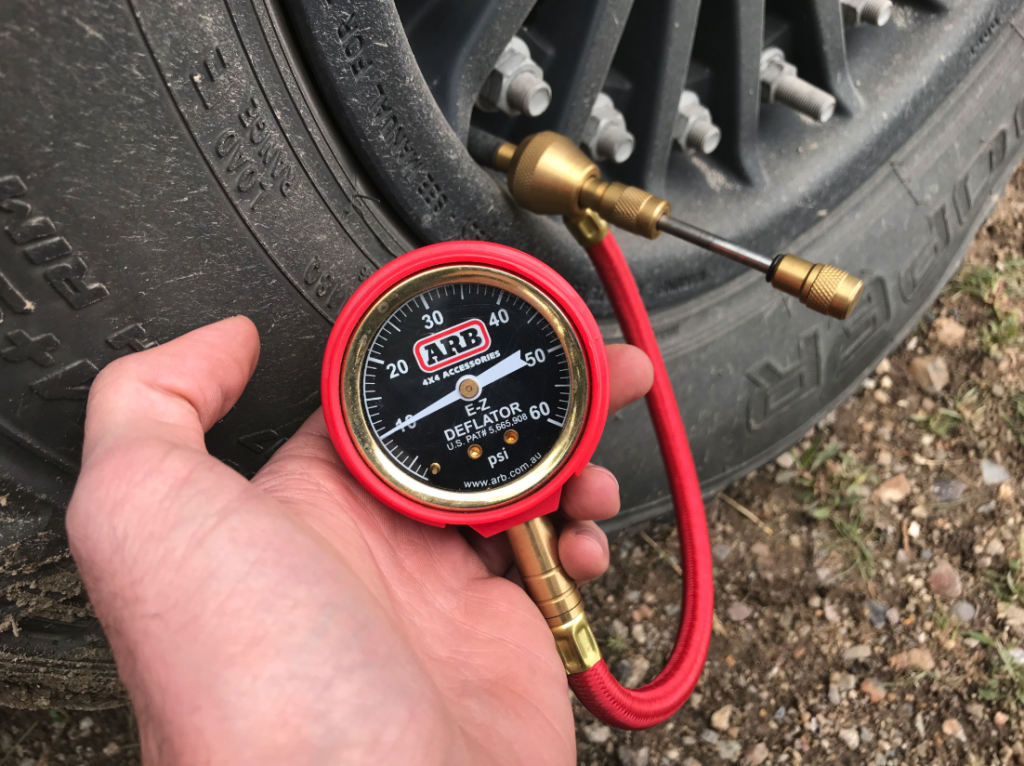
Once finished, push the knob back in and turn clockwise to reinstall the valve core. Remove the deflator from the tire valve, replace the valve cap, and you’re good to go.

I haven’t had a valve core failure yet, but I carry spare valve cores and a valve core tool in case I need to replace one.
With my current setup, I lower my tire pressure to 10 psi before I hit the trails. I only go this low because I have beadlock wheels made by Hutchinson. With a standard wheel, I’d stay above 15 psi, depending on your vehicle weight and driving style.

With a standard wheel, you’re more likely to break the bead and have the tire come off the wheel when you’re running at super low pressures. Beadlock wheels prevent that by firmly attaching the bead of the tire to the wheel using hardware, rather than relying on air pressure.
You don’t even need an ARB style deflator – you can use special screw-on valves with preset tire pressures, or just let the air out of the valve with a key. However, I do recommend the ARB deflator as it makes quick work of deflating the tires. My 34” Cooper ST Maxx tires drop from 40 psi to 10 psi in just a minute and a half each with the ARB deflator.
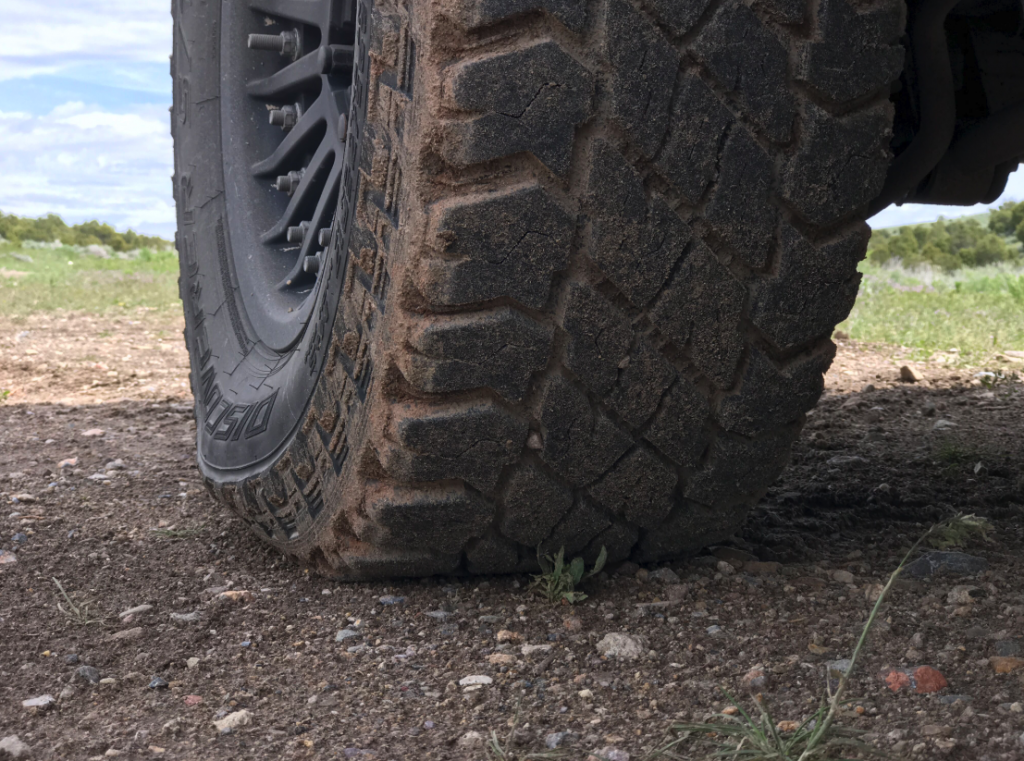
If you haven’t tried airing down yet, I highly recommend it. It’s one of the cheapest and easiest ways to improve your off-road driving experience. Once aired down, your ride comfort will improve greatly as the tires cushion the vehicle and conform to the contours of the road or trail. Washboard roads are smoother and rocky trails don’t feel like your teeth are going to rattle out of your head.
In addition, airing down gives your tires a bigger contact patch, increasing your vehicle’s off-road traction. With more surface area of your tire touching the ground, there’s more to grip. This is especially helpful in low traction environments like mud, sand and snow. More grip also means more effective movement on the trail, with less wheel spin and gas needed, and less damage to the trail.
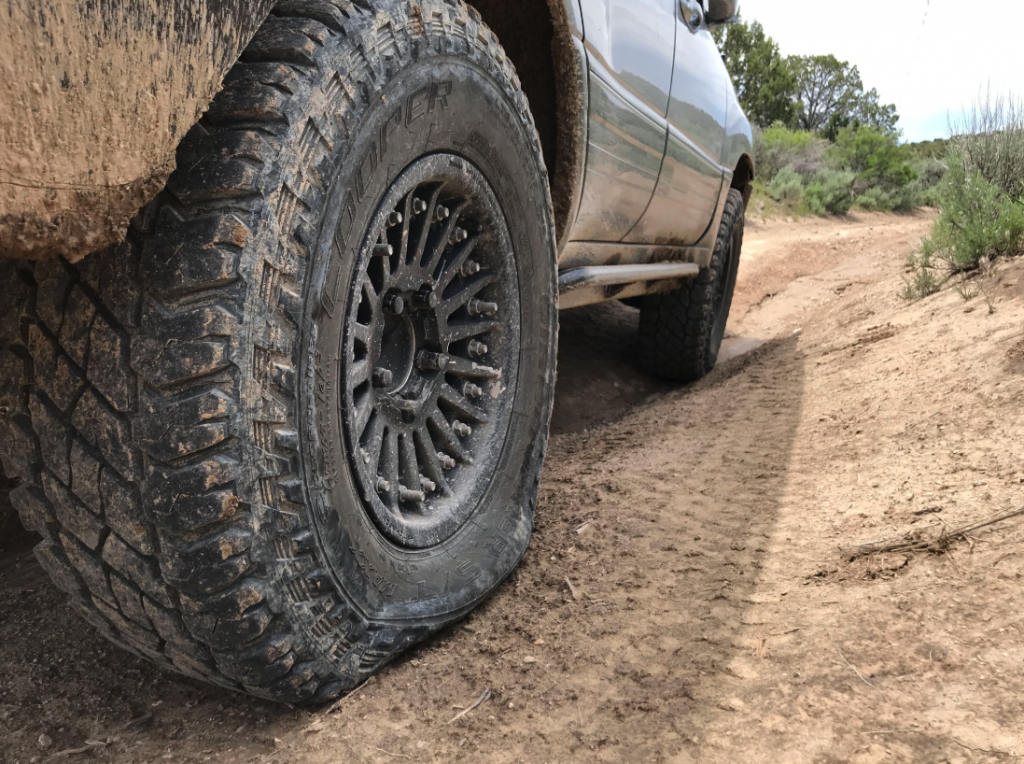
Airing down is so effective that I’ve seen people who got stuck off-road do nothing more than deflate their tires a little, and get moving again.
Tires at low pressure will also wrap around obstacles like rocks better, again providing more traction than a high pressure tire.
As I mentioned earlier, be careful not to air down too much or you may lose the bead on your tire. Also, tires aren’t meant to be run at low pressures on the street, so make sure to air back up before you head home. When run at higher speeds, the tire could heat up more quickly, leading to premature wear and damage.
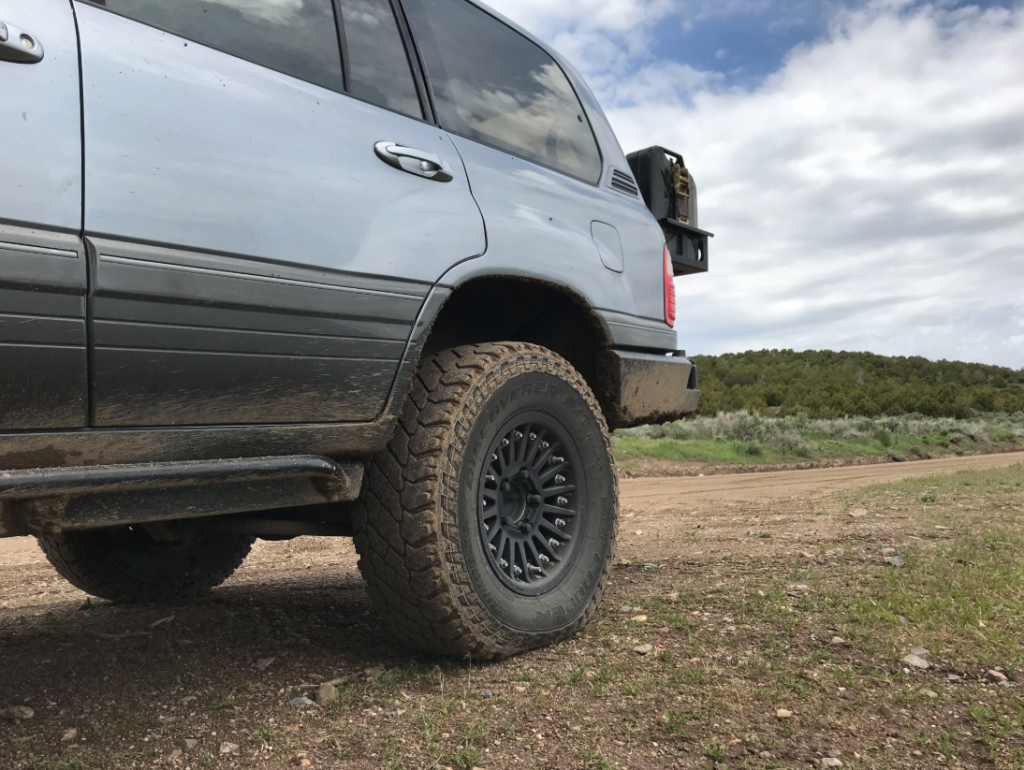
I try to only use aired-down tires on trails, but if I have to drive on pavement for a while, I try to keep my speeds under 50 mph.
One downside to airing down is that you need to figure out how to air back up before the trip home. Some people use CO₂ tanks or portable compressors, while others just find a gas station. I use an ARB twin compressor mounted in my engine bay. It’s not the most ideal location, as compressors work best with cool air, but I have to open the hood to use it anyway, and it tucks away nicely behind the intake. This compressor airs up my tires relatively fast – takes just two to three minutes to air up from 10 psi to 40 psi.
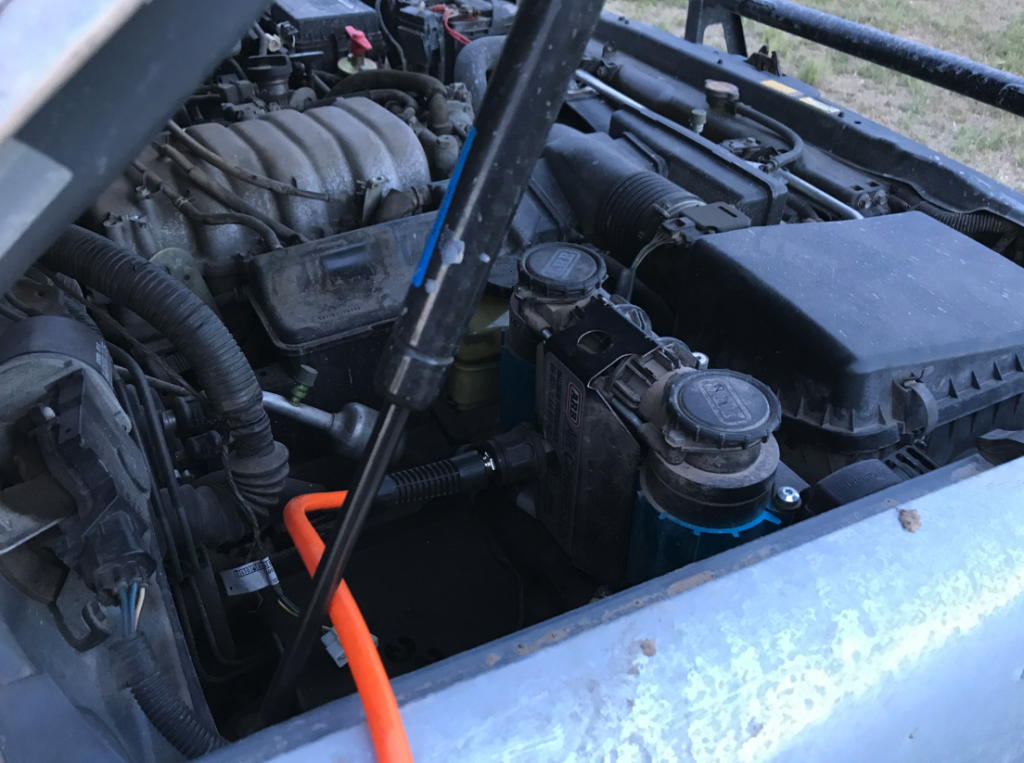
The whole airing down process is a little bit of a hassle, but if you’re going to be off-road for more than a half hour, I’d say it’s totally worth it.
 Your Privacy Choices
Your Privacy Choices
 The
The